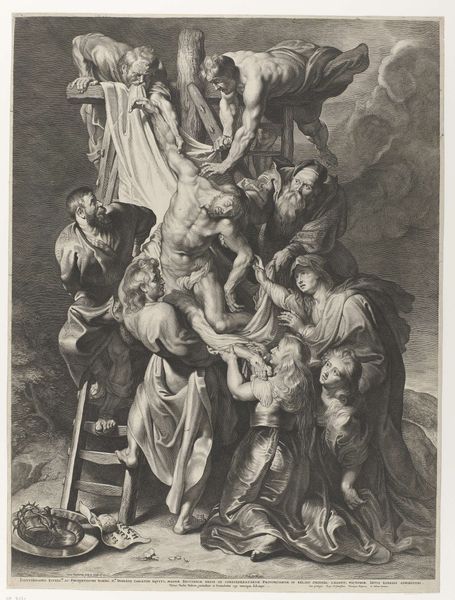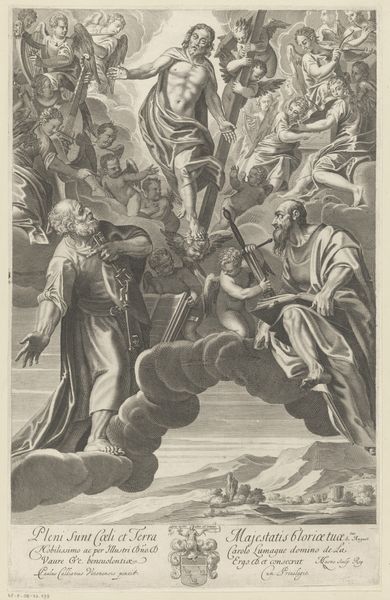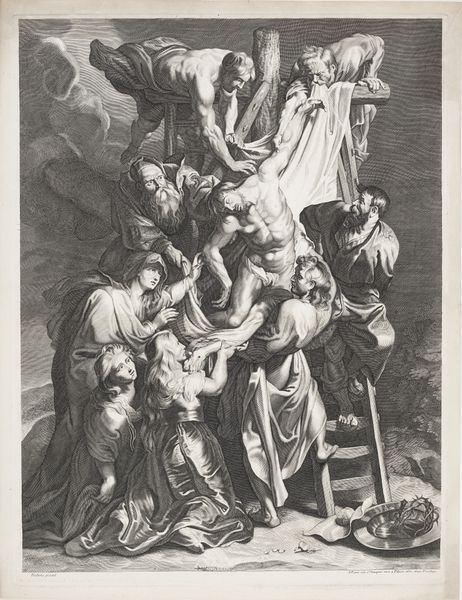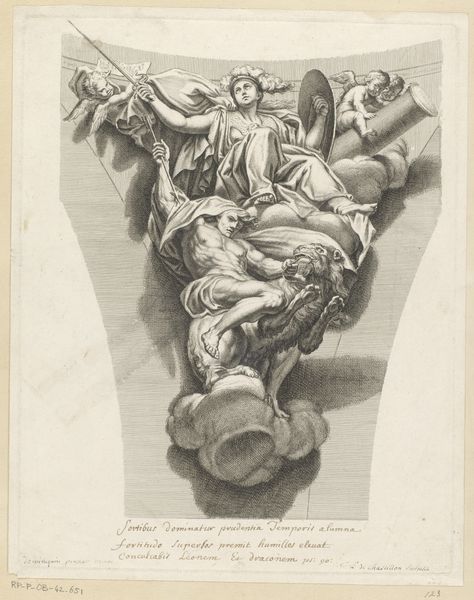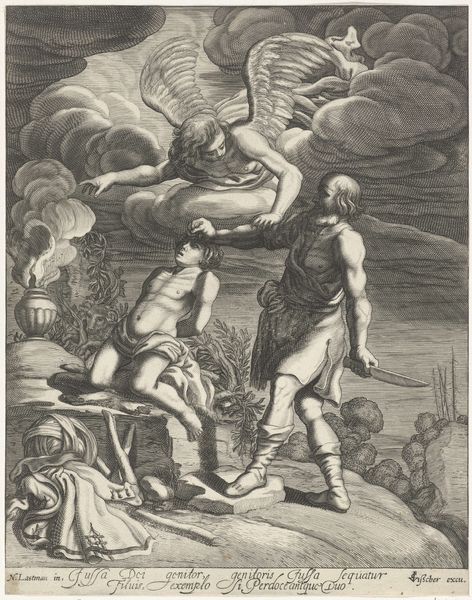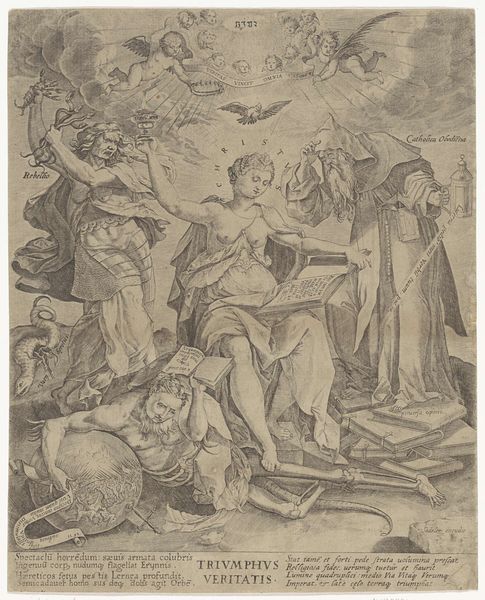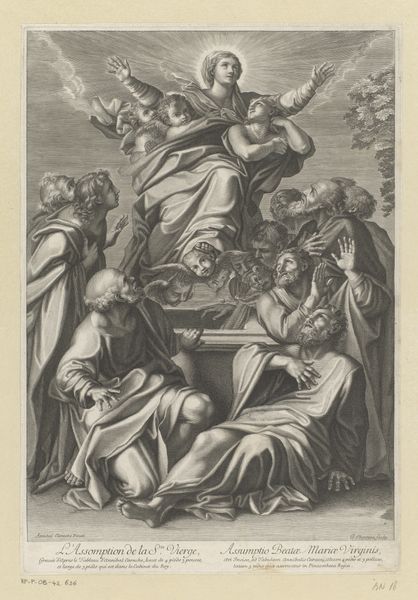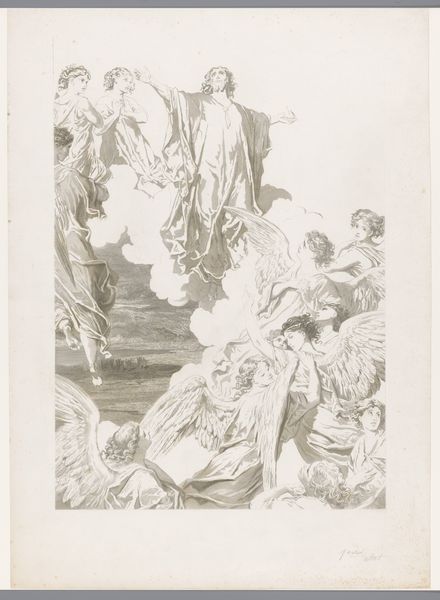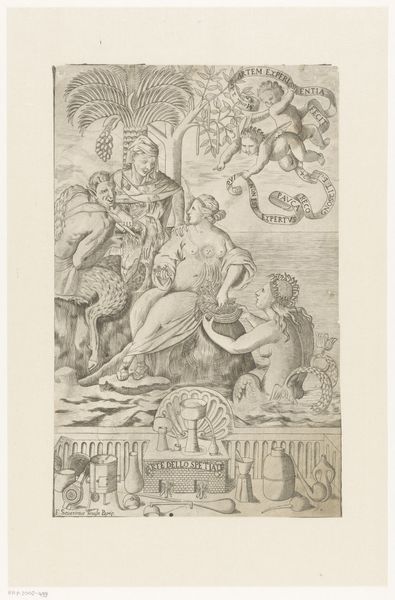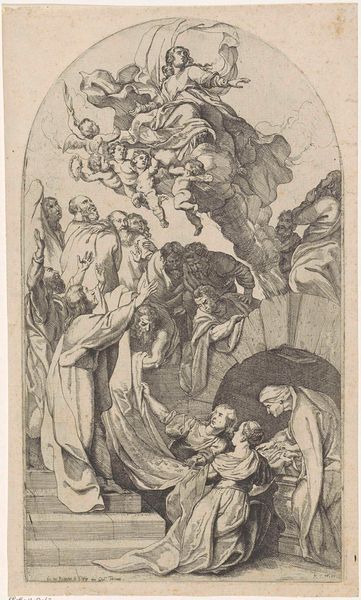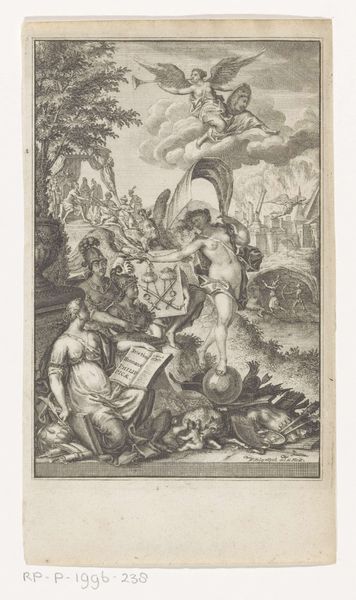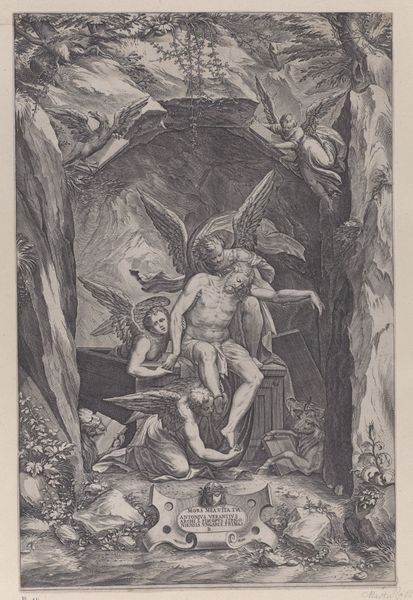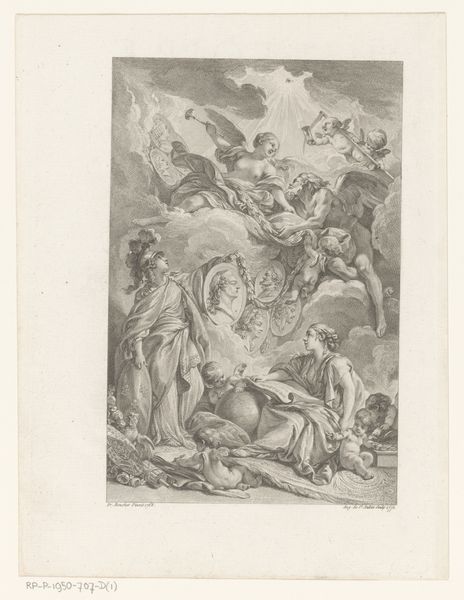
print, engraving
#
narrative-art
# print
#
pencil sketch
#
old engraving style
#
figuration
#
history-painting
#
academic-art
#
engraving
#
realism
Dimensions: height 521 mm, width 402 mm
Copyright: Rijks Museum: Open Domain
Editor: So, this is 'Kruisafname,' or 'Descent from the Cross,' an engraving by Jan Gerritsz. Visser, dating from between 1812 and 1821. It depicts, quite dramatically, Jesus being taken down from the cross. It’s incredibly detailed, almost photorealistic given the medium. What catches your eye when you look at this print? Curator: You know, what I find so poignant is the raw humanity on display. The careful cross-hatching creates such emotional depth. Each face tells a story, from grief to exhaustion. You almost feel as though you are standing there, a part of this sacred, heart-rending act. And then there’s that little still-life with the crown of thorns at the foot of the cross; morbid and thought-provoking, wouldn’t you say? It really draws attention to the reality of the scene. Do you notice how it draws you down, grounding all that drama overhead? Editor: Absolutely. The crown really emphasizes the suffering. And there's a contrast there too, between that small intimate still life and the much larger depiction of human emotion happening above. Why render this story in such detail and on such a large scale, relative to that little crown? Curator: Ah, a keen question! Visser, I suspect, wanted to make this story incredibly tangible. To not just understand the sacrifice intellectually, but to *feel* it, to see the sweat and strain, the pallor of death. That crown – a symbol of immense pain, yet also quiet reflection. What do you make of the way the figures support Jesus, gently taking his weight? Editor: There’s almost a dance-like quality in the way they are positioned, though their faces suggest it's a somber one. It really humanizes this religious scene for me. Curator: Exactly. It reminds us that faith, at its core, is about human connection and shared experience. Even the divine is brought down to earth. What a performance this would have made on the stage, or translated as a grand fresco on some palace wall. Editor: I agree. Thinking about the staging makes me appreciate the composition in a completely new way. Thanks!
Comments
No comments
Be the first to comment and join the conversation on the ultimate creative platform.
